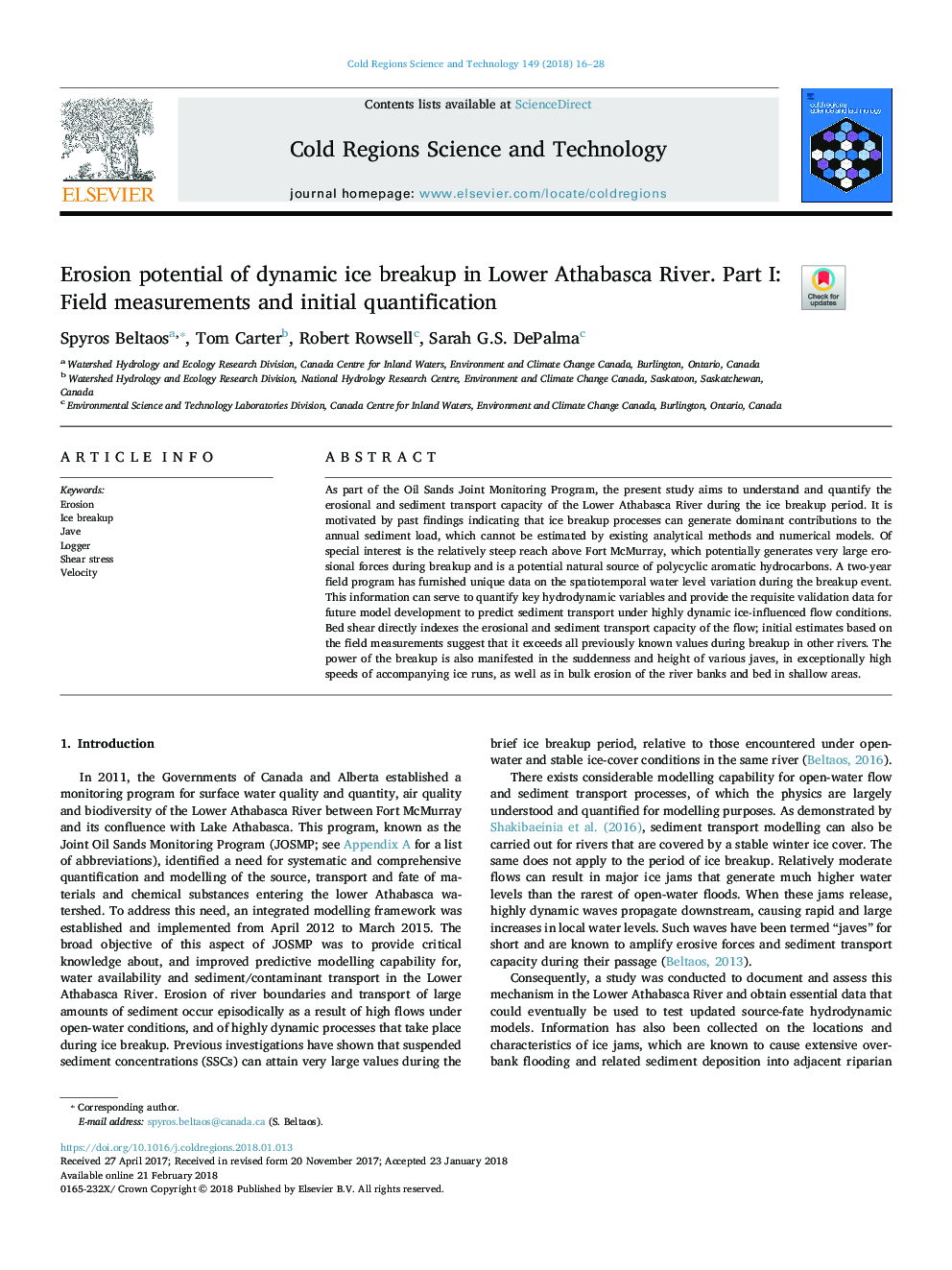| Article ID | Journal | Published Year | Pages | File Type |
|---|---|---|---|---|
| 8906515 | Cold Regions Science and Technology | 2018 | 13 Pages |
Abstract
As part of the Oil Sands Joint Monitoring Program, the present study aims to understand and quantify the erosional and sediment transport capacity of the Lower Athabasca River during the ice breakup period. It is motivated by past findings indicating that ice breakup processes can generate dominant contributions to the annual sediment load, which cannot be estimated by existing analytical methods and numerical models. Of special interest is the relatively steep reach above Fort McMurray, which potentially generates very large erosional forces during breakup and is a potential natural source of polycyclic aromatic hydrocarbons. A two-year field program has furnished unique data on the spatiotemporal water level variation during the breakup event. This information can serve to quantify key hydrodynamic variables and provide the requisite validation data for future model development to predict sediment transport under highly dynamic ice-influenced flow conditions. Bed shear directly indexes the erosional and sediment transport capacity of the flow; initial estimates based on the field measurements suggest that it exceeds all previously known values during breakup in other rivers. The power of the breakup is also manifested in the suddenness and height of various javes, in exceptionally high speeds of accompanying ice runs, as well as in bulk erosion of the river banks and bed in shallow areas.
Related Topics
Physical Sciences and Engineering
Earth and Planetary Sciences
Earth and Planetary Sciences (General)
Authors
Spyros Beltaos, Tom Carter, Robert Rowsell, Sarah G.S. DePalma,
